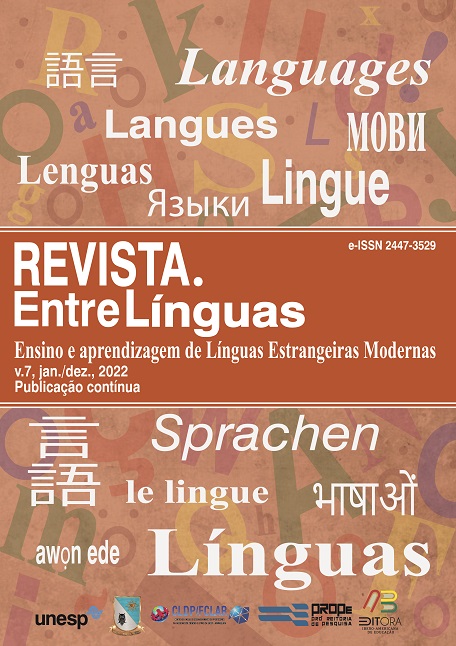Estudar e ensinar literatura infantil na educação com base em nova metodologia
DOI:
https://doi.org/10.29051/el.v8i00.17680Palavras-chave:
Ensinar educação, Metodologia, Literatura infantilResumo
In this scientific article we have studied the literary heritage in the light of a new modern national thinking, in accordance with the requirements of the time. In addition to traditional materials in the teaching of children's literature, the latest scientific achievements in this field were highlighted, and the need for works that fully reflect the child's inner feelings, joys, sufferings, psychological and spiritual experiences was shown. In the process of teaching, in the formation of the spiritual education of children and youth, in terms of expanding their worldview, the study of children's literature in education in the direction of the latest methodology is set as an important issue of today. In order to train specialists who can meet these requirements, it is necessary to revise the curriculum, programs, textbooks, teaching aids in higher education, and their level should be set at the level of today's requirements, both in terms of teaching methods and scientific theory.
Downloads
Referências
ABDULLA, B. (org.) Azerbaijani folklore. Selections for schools. Baku: Nurlan, 2005.
AHMADOVA, J. Methods of teaching literature. Baku: Nurlan, 1991.
ALASGARLI, K. Z. Children's literature. Textbook for higher and secondary special schools). ADPU Publishing House, 2007.
GAFARLI, R. Genre system and poetics of children's folklore. Baku: Science and Education, 2013.
HABBIBEYLI, I. Literary personality and time. Baku: Science and education, 2017.
HAJIYEV, A.; YUSIFOV, F. Organization of literature lessons at school. Baku: Marif, 2003.
HASANLI, B. Azerbaijan children's literature. (Textbook) Teacher's edition. Baku, 2015.
ISMAYILOVA, N. Examples of folklore in modern children's poetry. In: Materials of the scientific-practical conference on modern teaching methods and application of new pedagogical technologies in the educational process. NMI, School, 2005.
ISMAYILOVA, N. Nakhchivan literary environment: Directions and problems of development of children's literature. (textbook). Baku: Science and education, 2016.
ISMAYILOVA, N. Ways to build a new aspect of teaching children's literature in higher schools. In: Materials of the scientific-practical conference on modern teaching methods and application of new pedagogical technologies in the educational process. NMI, “School” publishing house, 2004.
NAMAZOV, G. Azerbaijan children's literature. Textbook for high school. Baku: Baku State University Publishing House, 2007.
VEYSOVA, Z, Active (interactive) training, teacher's guide. Baku: Science, 2007.
YUSIFOGHLU, R. Children's literature. Textbook. Baku, 2006.
YUSIFOV, F. Methodology of teaching literature. Textbook for undergraduate students of philological faculties of universities. Baku: Handan, 2017.
Downloads
Publicado
Como Citar
Edição
Seção
Licença

Este trabalho está licenciado sob uma licença Creative Commons Attribution-NonCommercial-ShareAlike 4.0 International License.
Os manuscritos aceitos e publicados são de propriedade da Revista EntreLínguas. Os artigos publicados e as referências citadas na Revista EntreLínguas são de inteira responsabilidade de seus autores.
Transferência de direitos autorais – autorização para publicação
Caso o artigo submetido seja aprovado para publicação, já fica acordado que o(s) autor(es) autoriza(m) a UNESP a reproduzi-lo e publicá-lo na EntreLínguas, entendendo-se os termos “reprodução” e “publicação” conforme definição respectivamente dos incisos VI e I do artigo 5° da Lei 9610/98. O artigo poderá ser acessado pela rede mundial de computadores (Internet), sendo permitidas, a título gratuito, a consulta e a reprodução de exemplar do artigo para uso próprio de quem a consulta, desde que haja a citação ao texto consultado. Essa autorização de publicação 328 EntreLínguas, Araraquara, v. 1, n .2, p. 323-328, jul./dez. 2015 não tem limitação de tempo, ficando a UNESP responsável pela manutenção da identificação do(s) autor(es) do artigo. Os artigos publicados e as referências citadas na Revista EntreLínguas são de inteira responsabilidade de seus autores.











